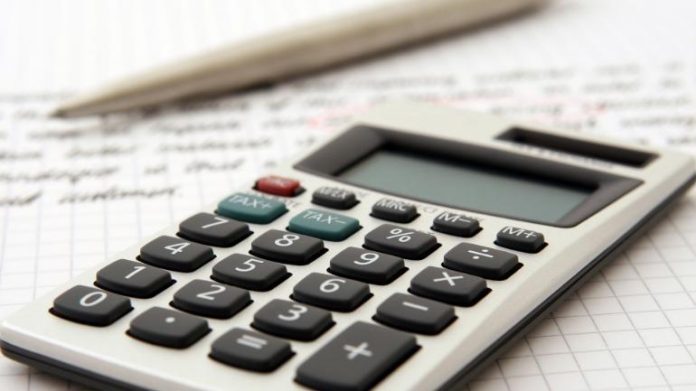Since it is now necessary to provide a break-up of gross salary, income earned from house properties and income from other sources while filing ITR1 form, taxpayers should keep certain documents close to them during the process:
HIGHLIGHTS
- Many taxpayers often make errors due to missing documents
- Some of these documents help fetch significant tax benefits
- Form 26AS is one of the most important documents required during ITR filing
Millions of Indians are required to file income tax returns (ITR) at the end of each financial year to avoid penalties and earn certain tax benefits. Filing income tax can be tricky at times but it can be accomplished in minutes if you have the necessary documents with you.
Since it is now necessary to provide a break-up of gross salary, income earned from house properties and income from other sources while filing ITR1 form, taxpayers should keep certain documents close to them during the process:
Form 16
If you are a salaried professional, this is one of the most important documents required while filing ITR. Form 16 is basically a TDS or tax deducted at source certificate issued by the employer, providing details of your gross remuneration and TDS deducted on it. Any employer who deducts TDS from salary has to provide a Form 16 to employers. Even if no tax is deducted at source on income, you can ask the employer to give Form 16 to you. Since you will be required to give a complete break up of your salary, having Form 16 will help significantly in filing accurate tax return.
A regular Form 16 has two parts Part A and B. While Part A contains information pertaining to tax deductions by your employer, it also consists of PAN, PAN and TAN of employers. On the other hand, Part B consists of gross salary break-up details such as exempt allowances. It is important to not have any incorrect details of your Form 16.
Salary slips
Another document that comes in extremely handy during ITR filing is a salary slip. Since all income has to be disclosed by taxpayers, it is necessary for them to provide information on allowances such as house rent and transport allowance,
You can find the breakup of all such allowances on your salary slips. You can sum up all the allowances you have received as House Rent Allowance (HRA) in the last financial year, following which you can calculate the tax on the amount.
Considering the fact that the tax treatment of each allowance received is taxed differently, it is key that you go through your salary slips to find out the exact type of allowances.
Form 16A, Form 16B, Form 16C
If TDS is deducted on any income other than salary over specified limit under income tax laws, the bank will issue a Form 16A form with exact details of amount of TDS deducted. Meanwhile, if you have recently sold any property belonging to you, the buyer has to issue a Form 16B.
Last but not the least, if you are earning income from rent, you should ask the tenant to give you a Form 16C for providing details related to TDS deducted on received rent.
Interest certificates from banks
Interest certificates are issued by banks and contain information related to interest income from savings bank account, post office savings account, fixed deposits and recurring deposits all of which are taxable beyond a certain ceiling (Rs 10,000).
In case your bank does not issue an interest certificate, you should ideally keep your passbook updated. It will help you figure out exact details regarding interest credited to your account till the end of the financial year.
Home loan statement
Taxpayers who have taken home loan from bank or other financial institution, should collect the loan statement from the bank as it will provide break-up details of principal and interest repayment.
Under Section 24, a taxpayer’s liability comes down on timely repayment of loan installments. An individual can claim up to Rs 2 lakh under the section. However, a taxpayer is required to provide the exact amount of interest repaid in ITR along with the rental income (if any) from the house.
Form 26AS
Form 26AS is one of the most important documents that individuals should look at before filing returns. Form 26AS is basically a consolidated annual tax statement. It has information of taxes deposited against your PAN card. TDS deducted by employer, banks (in some cases), advance tax deposits and any self-assessment taxes that you paid.
Individuals can download Form 26AS from TDS Reconciliation Analysis and Correction Enabling System (TRACES) website. Before filing income tax return, you should crosscheck that all deducted taxes reflect against your PAN in Form 26AS. Any mismatch would disallow individuals from claiming tax credit.
Insurance deduction certificates
There are various other sections under which tax deductions can be claimed apart from tax-saving investments under popular Section 80C of Income Tax Act. Buying a health insurance premium can also earn you deductions over Rs 25,000 under Section 80D of the act.
So, if you have purchased any health insurance, you should furnish details of the insurance certificate to claim additional deduction.
Similarly, deduction can also be claimed for any interest paid towards education loans under Section 80E.
Aadhaar card
Aadhaar card has become mandatory for filing ITR under Section 139AA of the Income Tax Act. It says that an individual has to provide his or her Aadhaar details while filing tax return. Those without an Aadhaar card will not be able to file ITR unless they have applied for it, in which case, people will be able to complete the process using an enrollment ID.


